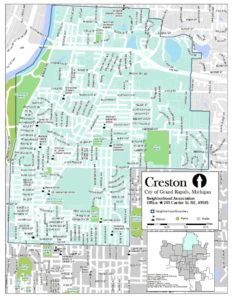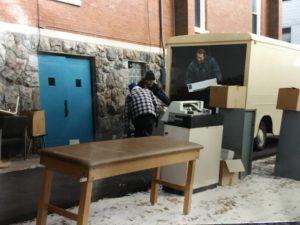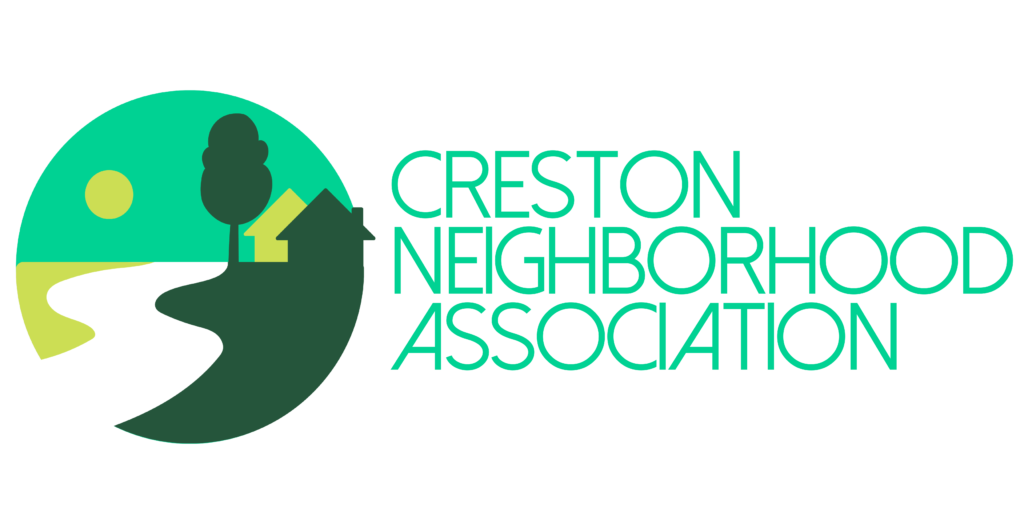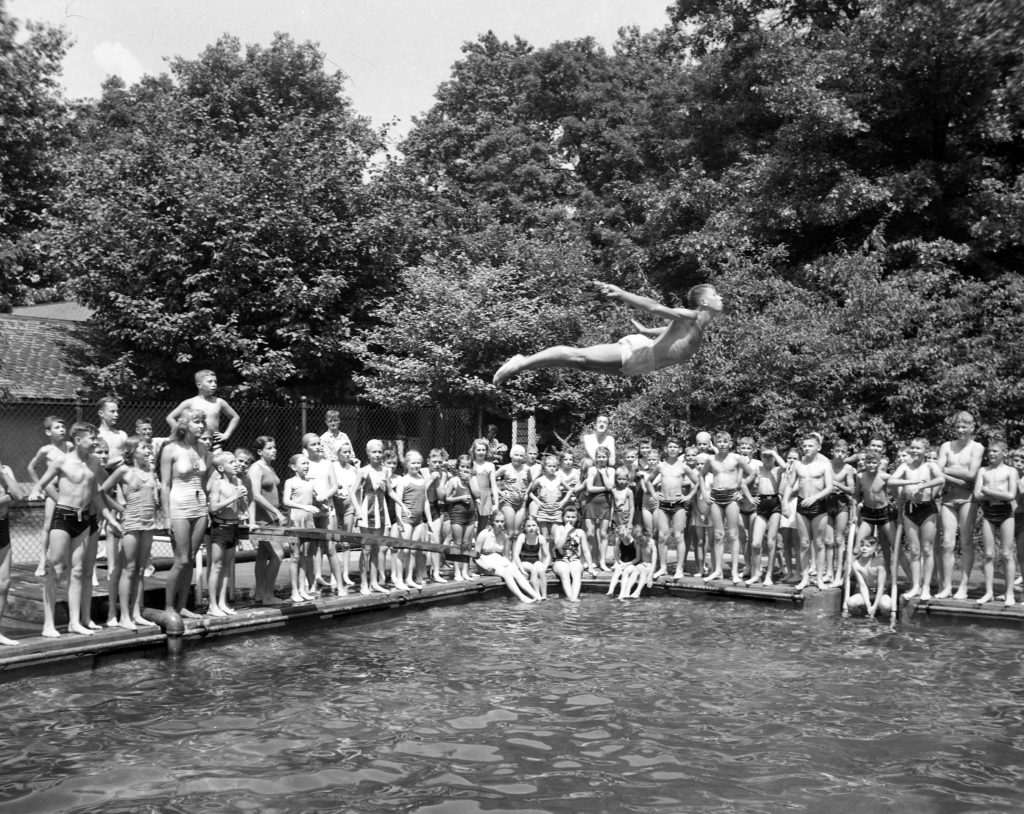
Briggs Park Pool: A Pool for the People
By Eleanor Vander Ark and Jesse Brink
Briggs Park gets its name from the first settlers of the area and the long-time owners of the property. First settling in Grand Rapids in 1850, Barber and Mary Briggs turned wilderness into a working farm and erected a house two years later. In 1910, their son Charles sold eleven acres of the farm to the city at an extremely discounted rate to establish a park. Although part of the park was eventually sold to Grand Rapids Public Schools for a track (a decision which infuriated Charles), the park and pool still bear the family name. The great-great-grandson of the first Briggs family still lives in the original house, now the third-oldest building in Grand Rapids and a designated historical landmark.
The original Briggs Park Pool was built in 1926. Complete with a bathhouse, showers, and restroom facilities, it was considered a state of the art facility and cost $18,000 to build. The original pool was split by a picket fence to separate the boys and girls.
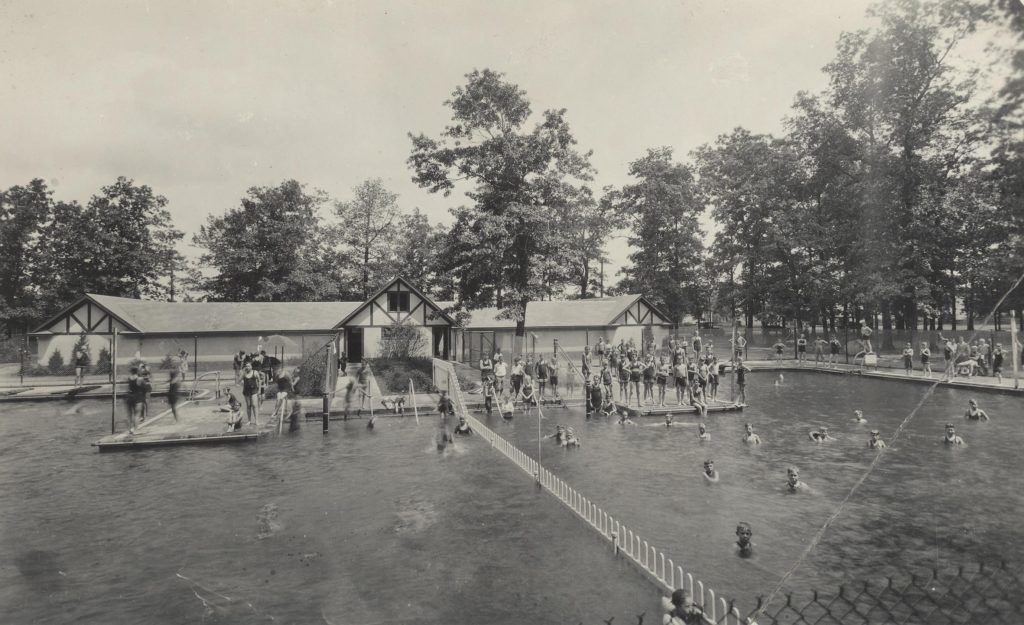
Over the next six decades, the Briggs Pool was central to the summers of Creston children, who took morning swimming lessons (the pool was not heated at this time–brrr!!), competed with the “Briggs Pigs” swim team, and enjoyed afternoon recreation programming. Stay-at-home mothers would bring their children to the pool and stay all day, socializing with each other while the kids splashed around in the pool.
However, as the condition of the pool began to deteriorate and the growing presence of automobiles allowed mobility to other recreational activities, use of the Briggs Pool started to decline. When rumors that the land would be sold began circulating in the late 70s, the same stay-at-home mothers who spent their summer hours at the pool sprang into action, naming themselves the “Briggs Park Coalition” in order to gain recognition from the city government. The Coalition raised public awareness of the potential closure, working closely with the recently-formed Creston Neighborhood Association, and called their fellow Crestonites to action.
As the oldest operating pool in the U.S.–with concrete “crumbling to the touch,” according to the CNA news–the pool was eventually forced to close in 1986. The community continued to advocate for its reconstruction, at times drawing counter-protests when residents of the Southeast side called attention to the city’s perhaps worse neglect of pools in predominantly African American neighborhoods.
Finally, at the official vote to provide funding for the construction of Briggs and Richmond parks in August of 1989, the Briggs Park Coalition made one last grand effort to save the pool: the organizers brought dozens of kids decked out in swimsuits and towels to the meeting, entreating the city leaders to see firsthand the repercussions of their actions on the city’s children. The city commission voted 5-1 to fund these two pools. At last, the efforts of Creston community organizers were recognized and the pool was officially saved! Construction for the new pool was soon underway.
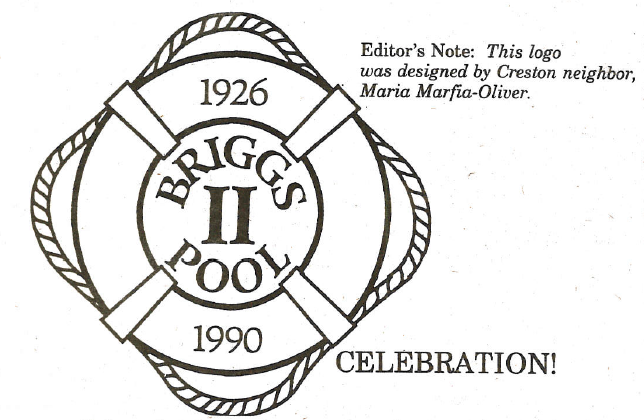
Eventually, on August 6, 1990, the new Briggs pool opened to the public. An excerpt from the CNA newsletter at the time details the opening of the pool and the excitement surrounding it: “It has often been said that good things come to those who wait, and it seems the good people the Creston neighborhood have finally been rewarded for their patience and persistence. When the Briggs Park Pool finally opened Monday, August 6, it was welcomed by cold, rainy weather, and several hundred neighbors. In spite of the cold, children and adults alike jumped into the pool for the inaugural swim.”
The Briggs Pool continues to be used and enjoyed widely by Crestonites today, and the Creston Neighborhood Association–which became active largely through the fight to save Briggs pool–remains an active organization, serving the community’s needs and empowering residents to realize their own voice and ability to enact change.



